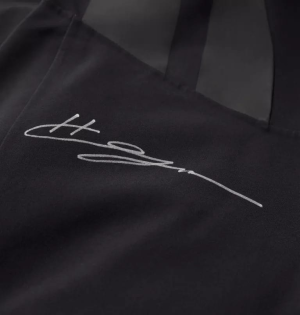George Lucas is not involved with the creation of Star Wars: The Force Awakens. When interviewed by Stephen Colbert about the forthcoming sequel, the now-retired filmmaker said "I'm excited, I have no idea what they're doing"—they being director J.J. Abrams and his team.
But according to Bruce Handy's new Vanity Fair cover story on the creation of Episode VII, Lucas at one point did have a vision for the story that the new Star Wars film would tell. By the time he sold Lucasfilm and related properties to Disney for more than $4 billion, he’d “sketched out ideas for episodes VII, VIII, and IX,” writes Handy, and had already approached Harrison Ford, Carrie Fischer, and Mark Hamill about being involved. Once the property was in Disney’s hands, though, the company and executive producer Kathleen Kennedy mostly scrapped Lucas's ideas. Why? Apparently, people involved may have been getting flashbacks to child actor Jake Matthew Lloyd’s performance in the first prequel:
[Abrams] said Lucas’s treatment had centered on very young characters—teenagers, Lucasfilm told me—which might have struck Disney executives as veering too close for comfort to The Phantom Menace and its 9-year-old Anakin Skywalker and 13-year-old Queen Amidala. “We’ve made some departures” from Lucas’s ideas, Kennedy conceded, but only in “exactly the way you would in any development process.”
Handy’s article drives home just how much the Force Awakens came out of the idea of getting to fill an entirely blank space with new Star Wars story. Luke, Han, and Leia are back and are 30 years older, but other than that, the filmmakers had to fabricate something completely fresh. The initially reluctant Abrams says this feeling of open-ended possibility is what brought him on board: “This idea of what’s happened in these past 30-something years. Where is Han Solo? What happened to Leia? Is Luke alive?”
The writing process apparently was somewhat tortured, with the Little Miss Sunshine screenwriter Michael Arndt making a first attempt but ultimately failing to pull together a script in time. As of early November 2013, the studio walls and whiteboards were filled with ideas, but the actual narrative hadn't been set in place. Abrams and the Empire Strikes Back/Return of the Jedi co-writer Lawrence Kasdan took over, starting from something very close to scratch. “We didn’t have anything,” Kasdan told Handy. “There were a thousand people waiting for answers on things, and you couldn’t tell them anything except, ‘Yeah, that guy’s in it.’ That was about it. That was really all we knew.” The two men then hashed out the story in conversations as they walked around Santa Monica, New York City, London, and Paris, and kept refining the script even as production began.
Abrams keeps talking about wanting to evoke the feel of the originals rather than the prequels—in the Vanity Fair story, he says he considered putting Jar Jar Binks's bones in the background of a Force Awakens scene. But perhaps an even bigger part of the reason for the fervent fan interest in every drib and drab of info about the Star Wars sequel is that its out-of-whole-cloth nature differs fundamentally from other big-budget franchise reboots. The Marvel universe is raiding published comic books for a years-long master narrative; other based-on-previous-films films, from Abrams’s take on Star Trek to recent updates of Robocop and Terminator, often retread familiar stories and feature old characters recast with newer actors. By contrast, Star Wars, for the most part, has the potential to be an all-new vision in a familiar setting. It probably can't blow minds as thoroughly as Lucas did in 1977, but at least fans don't have to worry about spotty child-acting derailing the story that defined their own childhoods.
This ******* guy.







God bless you Disney.


 in TCW
in TCW







































